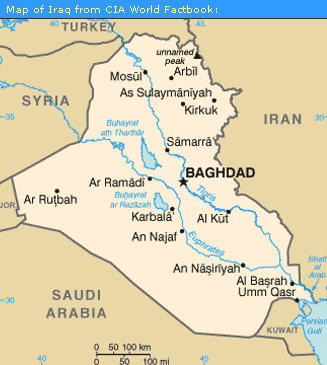In March 2003, the United States led a coalition of countries that invaded Iraq and brought down its Ba’athist government, dominated by minority Sunni Muslims and led by Saddam Hussein. His dictatorship tolerated no dissent; thousands of opponents — real and perceived — were killed, and the brutal treatment of common criminals made most Iraqis’ daily lives safe, though undemocratic. Saddam’s defeat (and eventual capture) was followed by a bloody insurgency that continues to date. The mostly Sunni insurgents include Iraqis, many presumed to be former Ba’athists, and foreign Muslims eager to fight American and other Western troops. Targeting coalition and Iraqi soldiers, Iraqi police, oil pipelines, and more, the insurgents have threatened an already unstable infrastructure. Amidst the violence, a transitional government has taken office based on results from January 2005 elections. Many Sunnis boycotted the vote, and the consequent government disproportionately represents the Shia Muslim majority and Kurdish (Muslim but not Arab) minority; some Sunni politicians have since sought greater involvement in the National Assembly. After months of negotiations, the National Assembly elected a Shia prime minister (Ibrahim al-Jafari), a Kurdish president (Jalal Talabani), and a Sunni speaker of parliament (Hajim al-Hassani). Some Iraqis, along with the American leadership, tout the new Iraqi government as a bastion of Western-style democracy that has begun to transform the Middle East. Skeptics question whether the government can function effectively, and some fear that the country is headed to civil war.
July 19th, 2005
Future for Lebanon
Map: Middle East Governments: Iraq
- Introduction
- Afghanistan
- Bahrain
- Egypt
- Iran
- Iraq
- Israel
- Jordan
- Kuwait
- Lebanon
- Oman
- Pakistan
- Palestinian Territory
- Qatar
- Saudi Arabia
- Syria
- Turkey
- United Arab Emirates
- Yemen


